Deciding between solid deck stain vs paint for your outdoor spaces can be challenging. Did you know that choosing the right coating can significantly impact the durability and appearance of your decks? This article guides you through the benefits and drawbacks of both options, helping you make an informed decision.
Key Takeaways
- Solid stain sinks into the wood to protect it and lets you see its texture, but might need more re-applying.
- Paint gives more color choices and makes a thicker barrier against damage, but can peel or crack over time.
- Before picking solid stain or paint, think about your local weather, how much work you want to do for upkeep, what look you want, and your budget.
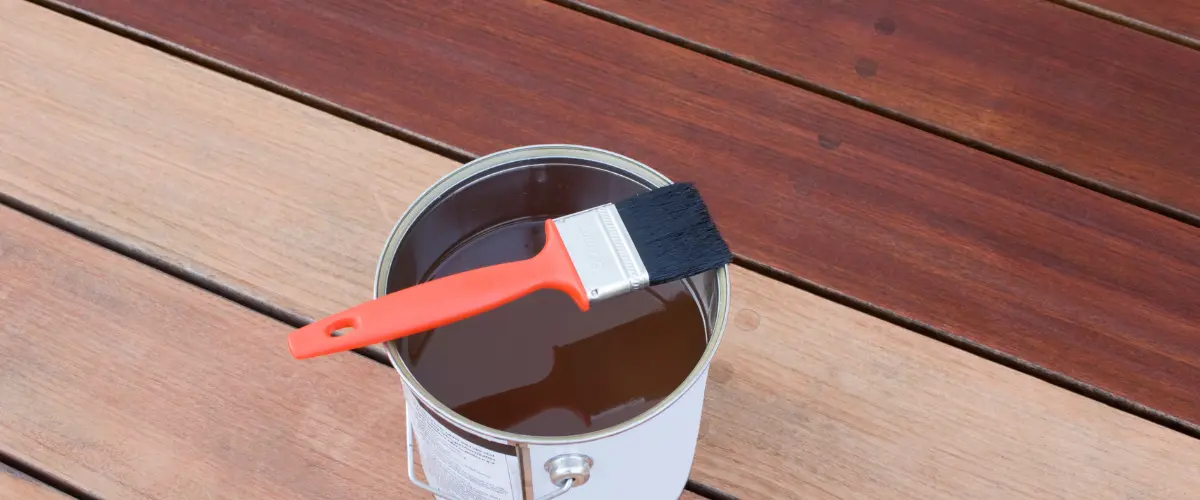
Understanding Solid Stain and Paint
Definition and purpose
Solid stain and paint both serve to protect and decorate wooden surfaces such as decks, siding, and fences. Solid stains penetrate deep into wood, offering protection while highlighting its natural texture.
They work well on wood that has been previously stained or is in poor condition because they can hide imperfections. On the other hand, paint sits on top of the surface, providing a thicker barrier against moisture and UV rays.
This results in a wide range of color options with a more uniform finish but might obscure the wood’s natural beauty.
Painting requires primer for better adhesion and usually needs two coats for full coverage. Solid stains often need just one coat, making it less labor-intensive compared to painting.
Choosing between solid stain vs paint depends on personal preference for maintenance level and aesthetic.
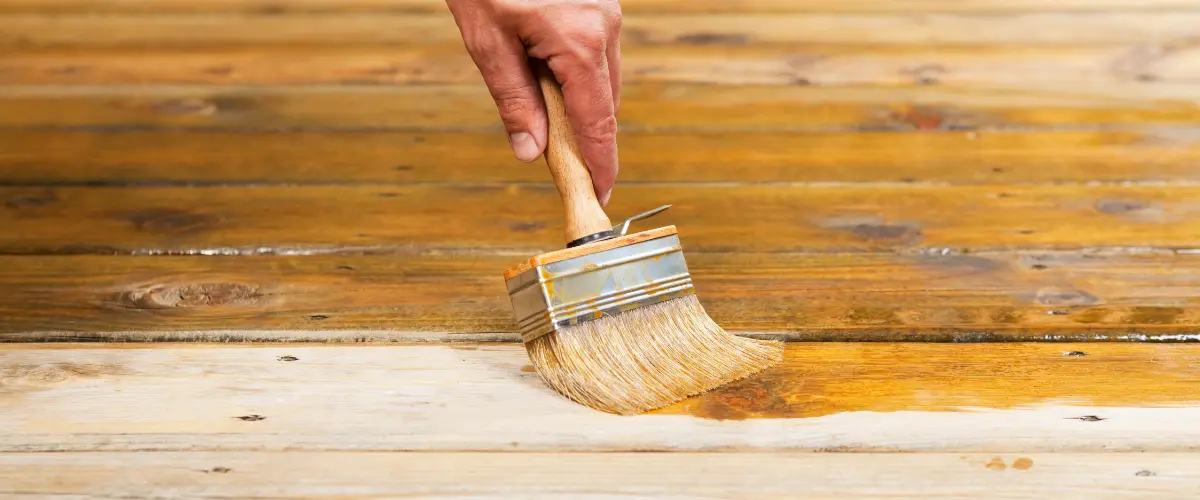
Types of Stains and Paints
- Solid Color Stain: This type delivers a vibrant, opaque color that obscures wood grain but exposes texture. They are excellent for older decks with flaws. Solid color stains penetrate deeply, providing enduring protection while allowing some of the wood's inherent attributes to be seen.
- Semi-transparent Stain: Perfect for new or excellently kept wood, this stain introduces a touch of color while emphasizing the natural grain and texture of the wood. It seeps into the wood, safeguarding against water damage and UV rays.
- Transparent Stain: These offer a transparent or faintly tinted finish, intending to accentuate the natural aesthetics of the wood without considerably changing its color. They provide less protection than more tinted stains but are ideal for high-quality woods like cedar.
- Latex House Paint: A favorite option for exterior wood, latex paint creates a malleable layer on top of the wood that withstands cracking and peeling. Available in an extensive array of colors, it provides superb coverage and shields against weathering.
- Oil Based Paints: Acknowledged for their durability and rich finish, oil-based paints are suitable for surfaces subjected to plenty of wear and tear like doors and railings. They usually dry slower than latex paints but yield a smoother finish with superior leveling.
- Deck Paint: Explicitly developed for horizontal surfaces, deck paint is denser than customary paint and includes components to curb mold growth, mildew, and UV damage. It is available in diverse colors, permitting customization based on individual choice.
Pros and Cons of Solid Stain
Benefits for wooden decks and siding
- Solid stain penetrates deep into wood, ensuring durable protection against weather elements.
- It highlights the natural texture of wood while adding color, making wood decks look vibrant and appealing.
- Solid stains require less maintenance compared to painted decks, saving homeowners time and effort in upkeep.
- They are designed to resist mildew growth, providing a healthier environment around your home.
- Stains offer a wider range of natural colors, allowing homeowners to enhance the natural beauty of their wood without hiding it.
- Unlike paint, stain does not peel or chip over time; instead, it fades gradually, making reapplication easier without extensive surface preparation.
- The protective qualities of a high-quality product mean wooden surfaces can withstand harsh conditions better, extending their lifespan.
- Applying stain on vertical surfaces like siding is more effective because of its better penetration compared to exterior paint, ensuring thorough coverage and protection.
- For decks that experience heavy foot traffic, stained surfaces are more forgiving and can be touched up easily without mismatched spots.
- Staining preserves the bare wood feel underfoot while safeguarding against wear and tear from use and outdoor elements.
Drawbacks of staining
- High maintenance - Stained decks and siding need regular upkeep, including cleaning and recoating every 2-3 years.
- Conceals wood grain - Solid stains cover the natural beauty of wood as they provide an opaque finish.
- Limited color options - Unlike paint, stain comes in fewer color choices, which may restrict your design preferences.
- Less UV protection - Stains offer limited protection against UV rays compared to paints, potentially leading to faster wood degradation.
- Prone to peeling - Improper application or poor-quality products can result in peeling or flaking over time, requiring additional maintenance.
- Difficult to change - Once the wood is stained, it's challenging to switch to paint later on without extensive preparation and stripping.
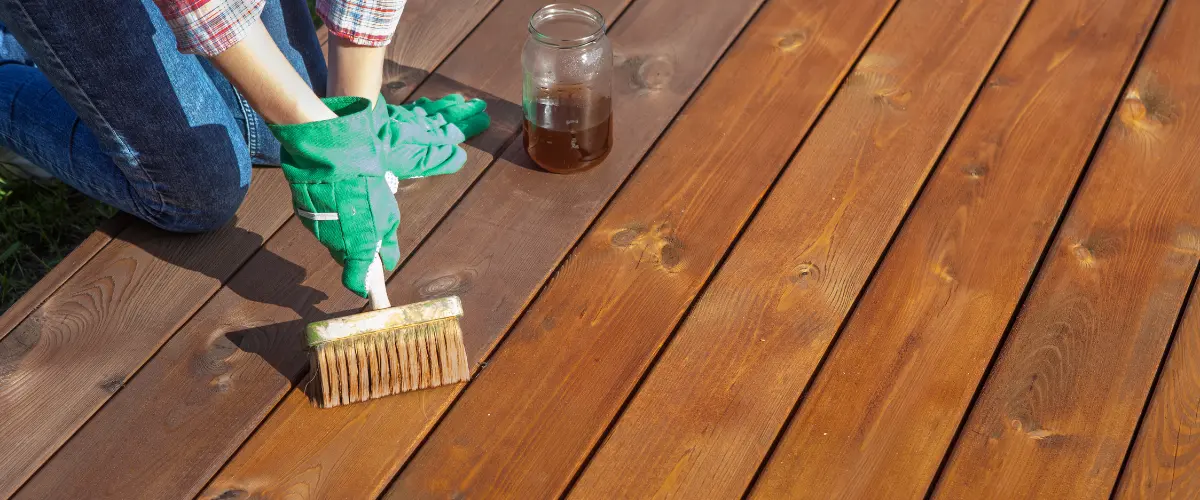
Pros and Cons of Solid Stain
Advantages of painted decks and siding
- Enhanced Protection: Exterior paint provides a strong barrier against UV rays, moisture, and extreme weather conditions, ensuring the longevity of your wooden deck and siding.
- Color Variety: Paint offers a wide range of color options, allowing homeowners to personalize their outdoor spaces according to their preferences and home aesthetic, using high-quality products.
- Covering Imperfections: With exterior paint, it's easier to conceal imperfections in the wood, providing a smooth and flawless finish for your deck and siding.
- Durability: High-quality exterior paints are designed to withstand heavy foot traffic and regular wear and tear, ensuring long-lasting beauty.
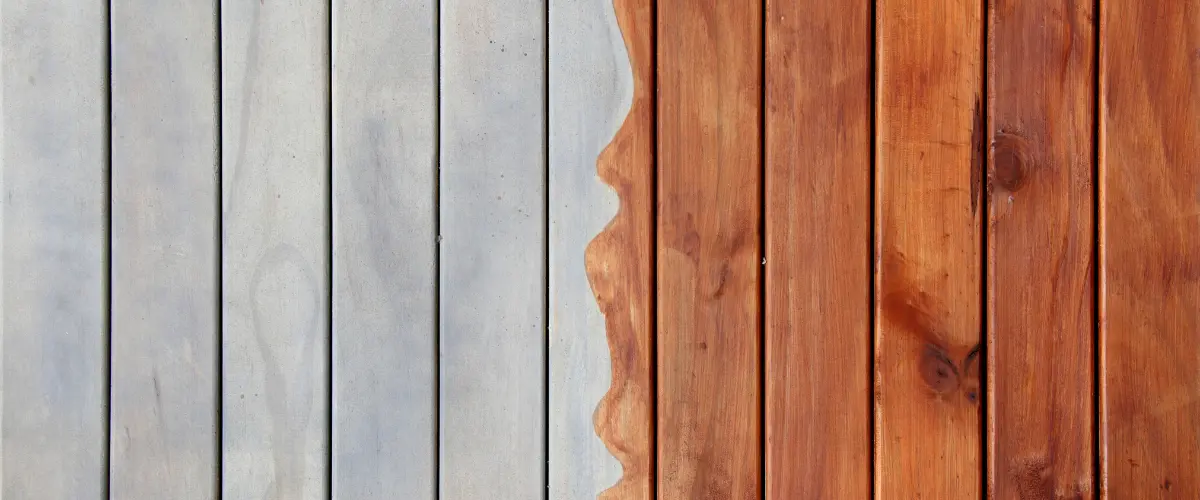
Disadvantages of exterior paint
- Exterior paint necessitates repainting every few years, adding to the maintenance costs.
- The film formed by paint is prone to peeling and cracking, detracting from the appearance of the deck or siding.
- Paint can trap moisture within the wood, potentially leading to rot and decay over time.
- The frequent need for maintenance and repairs can increase long-term expenses for homeowners.
Choosing the Right Option for Your Wooden Deck and Siding
Factors to consider
- Climate: Evaluate the prevailing weather conditions in your area to select a finish that can withstand the elements, such as rain, snow, or intense sunlight.
- Maintenance: Determine how much time and effort you are willing to invest in maintaining the finish, as some options require more frequent touch-ups than others.
- Durability: Assess the level of foot traffic and wear and tear your deck typically experiences to ensure the chosen finish can withstand heavy use.
- Application Ease: Think about whether you plan to apply the finish yourself or hire professional painters for a seamless application process.
- Aesthetic Preference: Consider your desired look for the deck or siding, whether it's a bold painted appearance or a more natural stained finish.
Hiring a contractor
When hiring a contractor for your deck or siding project, consider their experience with both solid stain and paint applications. Look for a contractor who is skilled in using top-notch products and can offer references for similar past projects.
It’s wise to select a contractor with a demonstrated history of delivering detailed work on wooden decks and siding.
Best Manufacturers of Stain and Paint for Wooden Decks and Siding
Behr
Renowned for its extensive range of colors and durable finishes, Behr ensures protection against the elements.
Sherwin-Williams
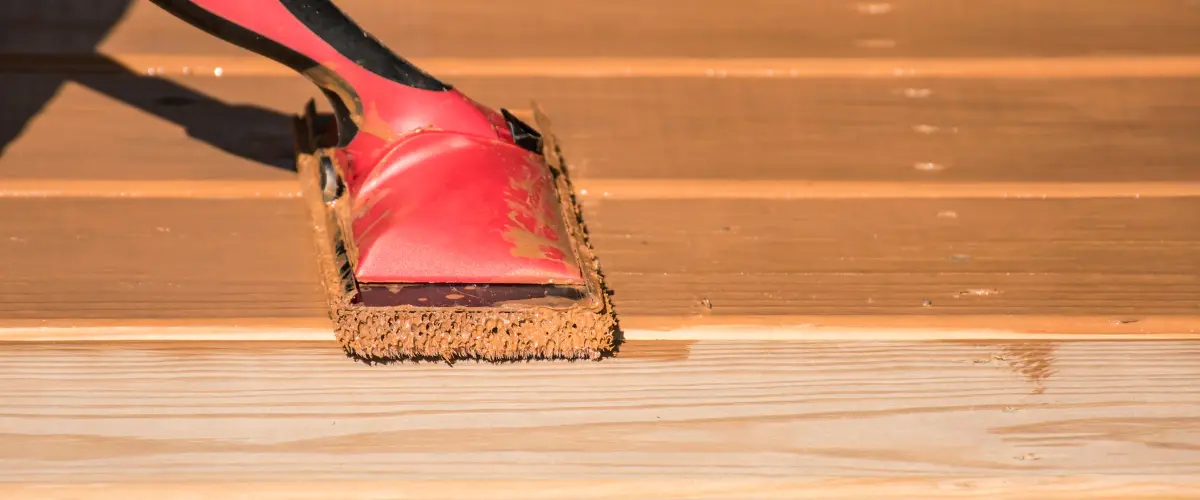
The Best Time of Day to Stain a Deck
Temperature considerations
When staining a deck, it’s crucial to pay attention to temperature. Aim for temperatures between 50°F and 90°F for optimal results with the stain. Staining in cooler temperatures can prolong drying time, while hot temperatures may cause the product to evaporate too quickly, leading to an uneven finish or bubbling.
Consider starting your staining project in the early morning or late afternoon when the sun is less intense and surfaces are not as hot. This will ensure that the stain has enough time to penetrate into the wood before drying too quickly.
Avoiding direct sunlight
When staining your deck, it’s crucial to avoid direct sunlight. High temperatures can cause the stain to dry too quickly, leading to an uneven finish and potential damage to the wood.
To prevent this, aim to stain your deck when it’s in the shade or during early morning or late afternoon when the sun is less intense. This will allow for better absorption of the stain into the wood and result in a more uniform and durable finish.
By ensuring that you apply the stain away from direct sunlight, you can optimize its effectiveness as it penetrates and protects your deck from wear and tear caused by weather conditions.
Staining in the morning vs. evening
For optimal results, consider staining your deck during the evening when temperatures are cooler. This allows the stain to dry more evenly and prevents it from drying too quickly, which can lead to an uneven finish.
Moreover, working in the shade during the evening helps to avoid direct sunlight, which can cause the stain to dry too fast and potentially result in lap marks or brush strokes on the surface.
When staining in the morning, ensure that you start early enough for the surface to fully dry before any potential dew forms. High humidity levels that often occur in the mornings can interfere with proper adhesion and drying of the stain.
Therefore, if choosing to stain in the morning, aim for a time when humidity is lower and temperatures are mild to achieve a flawless finish.
Tips for Successful Deck Staining
Checking the forecast
Before applying stain to your deck, it’s crucial to check the weather forecast for a dry period of at least 48 hours. Be mindful of rain and ensure that humidity levels are below 70%.
It is recommended to avoid staining on extremely cold or hot days, with the temperature ideally between 50°F and 90°F. When checking the forecast, aim for calm weather conditions without strong wind that could affect the staining process.
After reviewing the forecast, plan your staining project accordingly. Ensure there is no precipitation expected within two days following application to allow ample time for drying.
By monitoring these factors in the forecast, you can select the best window of opportunity to stain your deck successfully.
Properly prepping the surface
Before you start staining, it’s crucial to properly prep the deck surface. Begin by clearing the area of any furniture or plants and sweeping away debris. Use a wood cleaner to remove dirt, mold, and mildew.
For tougher stains, sanding may be necessary. Ensure the wood is completely dry before applying stain to achieve optimal results.
Using the right tools like a pressure washer or scrub brush will make cleaning more effective. Don’t forget to protect nearby plants and siding from potential damage during the prepping process for a smooth deck staining experience.
Using the right tools
For successful deck staining, select the appropriate tools for the task. Apply the stain evenly using a paintbrush or roller, or use a paint sprayer for larger decks. Clean and prepare the surface using a scrub brush or pressure washer to enhance the wood’s absorption of the stain.
It’s important to equip yourself with protective gear, including gloves, safety goggles, and a mask, to safeguard against any potential hazards from the stain’s chemicals.
Always choose high-quality tools suitable for outdoor use and durable enough for the job. Having all the essential tools on hand will facilitate your deck-staining project.
Choosing the right stain type
When choosing a stain type for your deck, consider the different options available such as oil-based, water-based, or solid stains. Oil-based stains penetrate deeply into the wood and provide a rich color, while water-based stains are eco-friendly and offer easy cleanup.
Solid stains create a protective layer on top of the wood, ideal for heavily weathered decks. Consider the level of protection and maintenance you desire when selecting the right stain type for your deck.
It’s important to note that understanding the characteristics of each stain type is crucial in making an informed decision about what will work best for your specific needs. In addition, considering factors such as UV protection, durability against foot traffic, and resistance to mold and mildew can help you narrow down which stain type is most suitable for your treated wood deck.
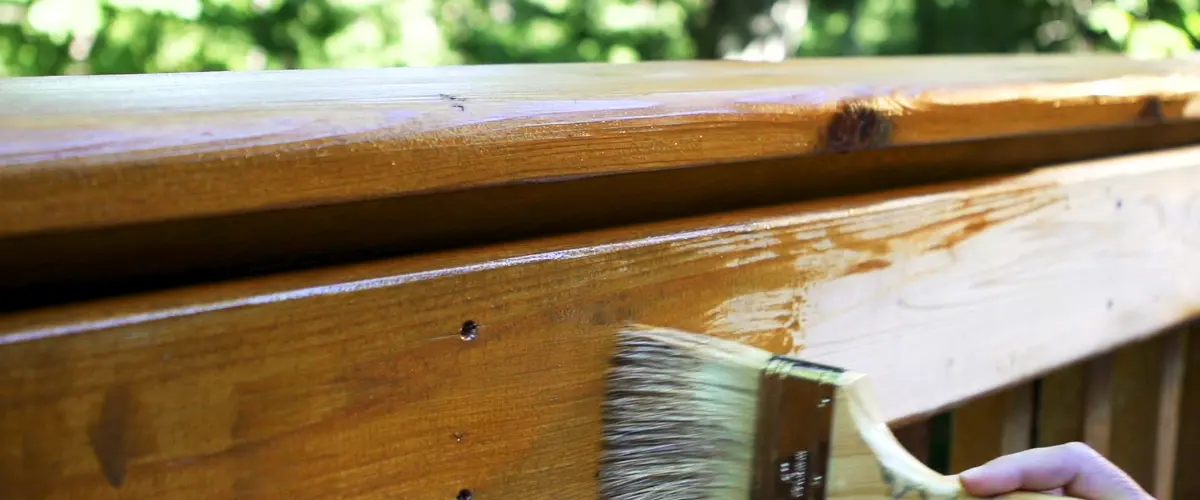
Top Manufacturers of Deck Stain
Behr
Known for its durable formulations, Behr offers a range of versatile stains suitable for various wood types.
Sherwin-Williams
A leader in the paint industry, Sherwin-Williams offers high-quality products tailored for various surfaces and climatic conditions.
Benjamin Moore
Known for premium paint options, Benjamin Moore provides exceptional coverage and aesthetic appeal for wooden surfaces.
Cabot
Cabot specialises in wood care products, offering rich stains that enhance the natural beauty of wooden decks.
Valspar
Valspar offers a wide selection of stains and paints known for their durability and vibrant color options suitable for outdoor use.

Best Weather To Stain a Deck - FAQs
Conclusion
Our team has been providing staining and painting services for years, ensuring professional results that save you money in the long run.
If you’re ready to tackle your deck building or deck installation project with industry experts, contact us at (402) 369-5724 to get started. we’re at your service in Omaha, Papillion, Bellevue, Gretna, Elkhorn, and more of Nebraska! Call us today at (402) 369-5724 or request a quote and let’s talk!
